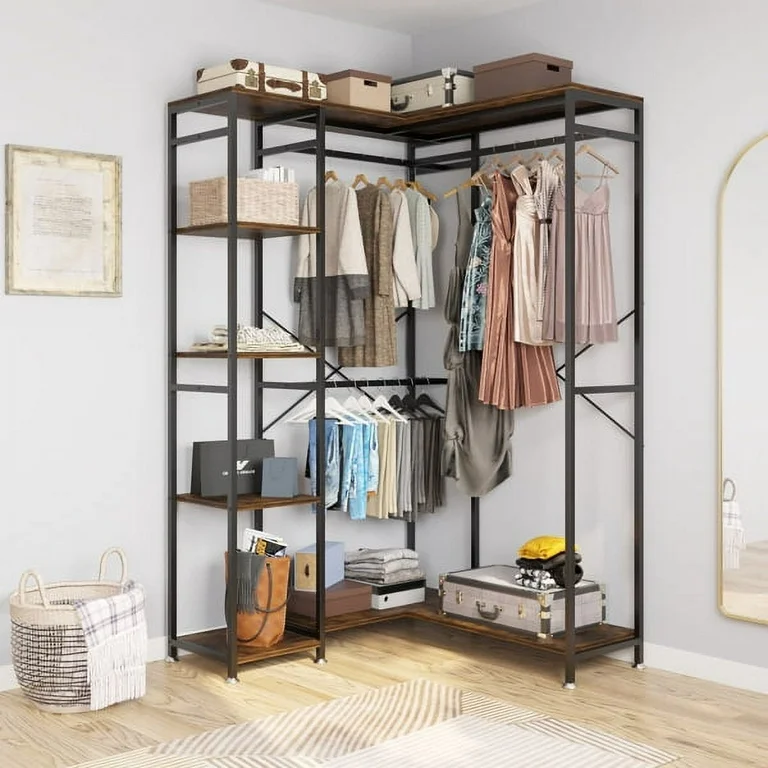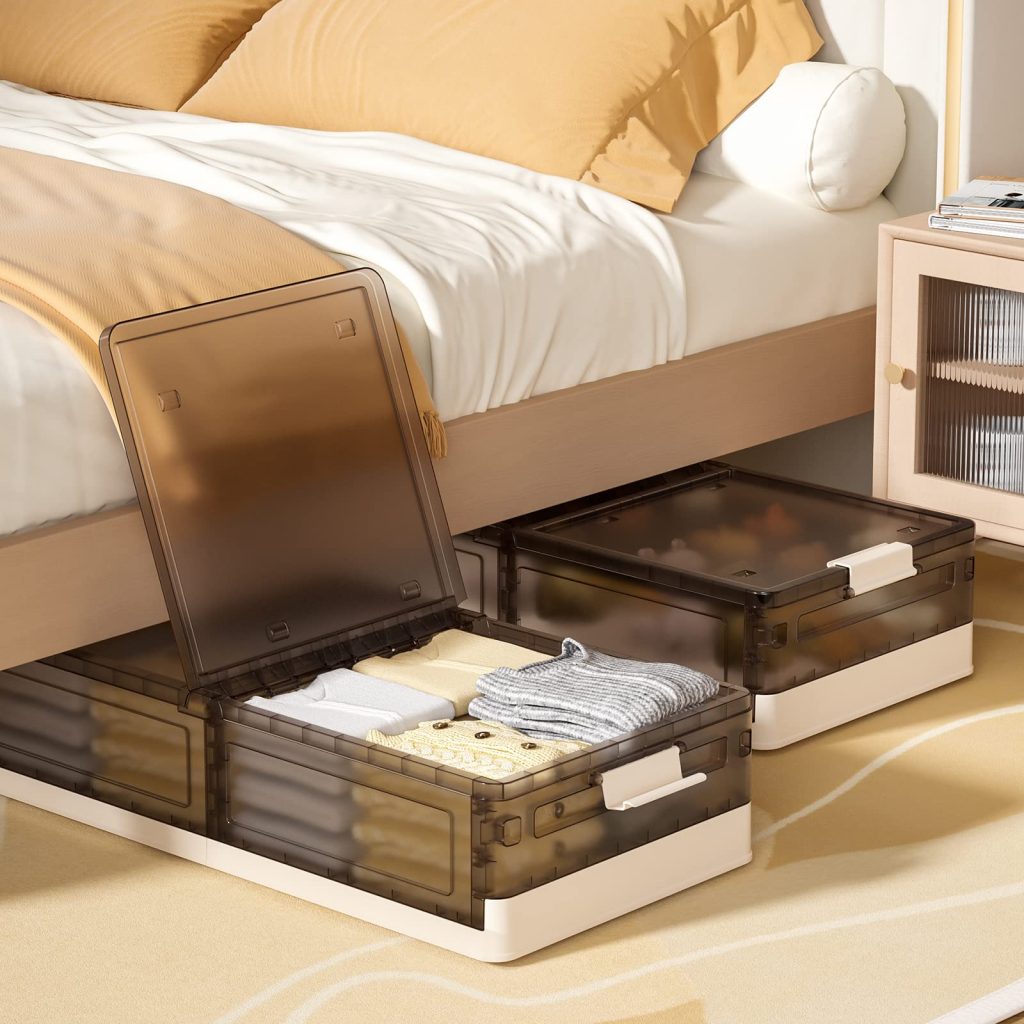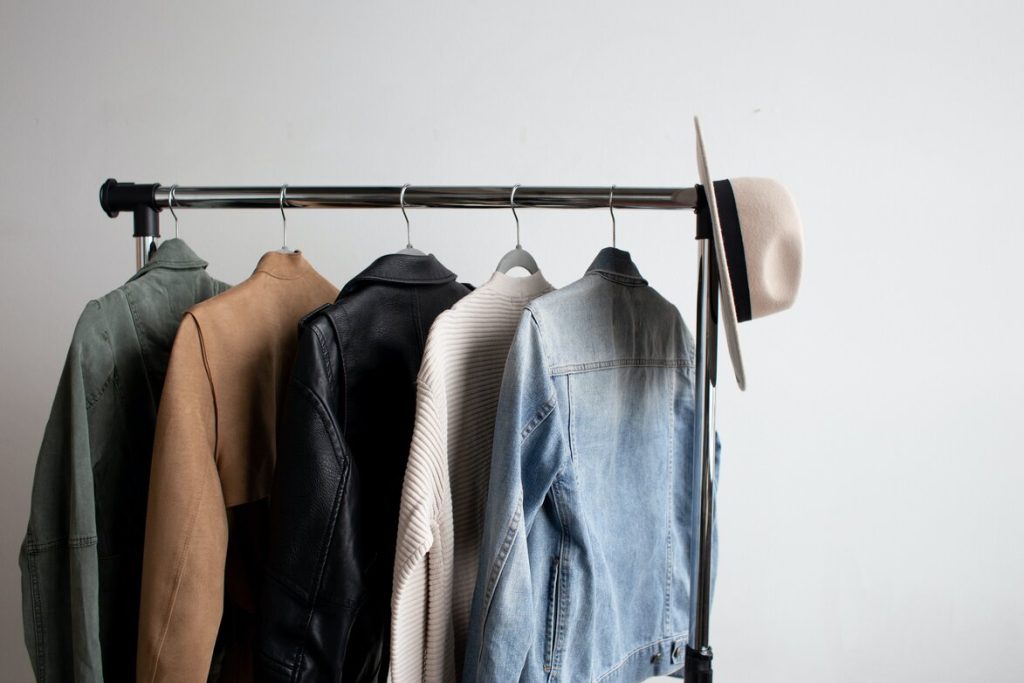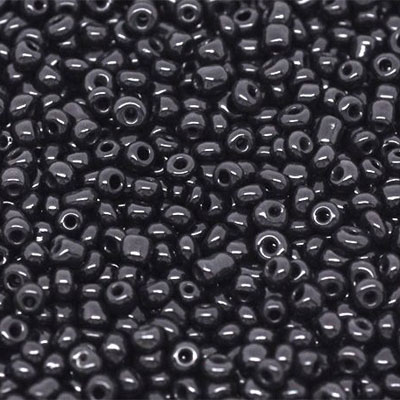How To Organize Clothes Without A Dresser?
Having a dresser is a common way to organize clothes, but sometimes we find ourselves in situations where a dresser is not available. This could be due to limited space, a desire for a different aesthetic, or simply not owning a dresser. Whatever the reason, it’s important to find alternative clothes storage ideas that are functional and efficient.
Keeping our clothes organized is essential for a well-functioning wardrobe. Without a dresser, it can be challenging to maintain order and easily find the items we need. Finding alternative storage solutions will not only help us stay organized but also maximize the space we have available and make our clothes more accessible.
What Can I Use Instead of a Dresser?
Contents
Shelving unit

A shelving unit is a versatile option for storing clothes without a dresser. Here are some tips for organizing clothes on shelves:
- Folding and stacking larger clothing items on shelves: Fold items like jeans, sweaters, and sweatshirts neatly and stack them on shelves. Place heavier items at the bottom to avoid toppling.
- Utilizing bins or baskets for organizing smaller items: Use bins or baskets to categorize smaller clothing items like socks, underwear, and accessories. Label the bins for easy identification.
- Maximizing vertical space with taller shelving units: Opt for taller shelving units to make the most of vertical space. Use the higher shelves for items that are not frequently accessed.
- Options like stackable storage shelves and locker-style units: Consider stackable storage shelves or locker-style units for a modular and organized approach to clothes storage.
Cube shelf unit
A cube shelf unit offers flexibility and adaptability for clothes storage. Here’s how you can utilize cube shelves effectively:
- Folding and stacking clothes in the cube compartments: Fold and stack clothes in each cube compartment. Reserve individual cubes for specific clothing categories, such as shirts, pants, or workout clothes.
- Utilizing vertical space with taller cube shelf units: Choose taller cube shelf units to maximize vertical space. This allows you to store more items without occupying much floor space.
- DIY options using plumbing parts and wood shelves: If you’re feeling crafty, you can create your own cube shelf unit using plumbing parts and wood shelves. This allows for customization based on your specific needs and available space.
Under-bed bins

Utilizing the space under your bed is an excellent option for storing clothes. Here’s how you can make the most of underbed storage:
- Utilizing the space under the bed for clothes storage: Invest in under-bed storage bins or containers that can fit your folded clothes. Opt for clear containers or label them for easy identification.
- Preference for bins with lids or open rolling drawers: Choose underbed bins with lids or open rolling drawers based on your preference and accessibility needs. Lidded bins provide protection against dust, while open rolling drawers offer easy access.
- Using bed risers to increase bed height for storage clearance: If your bed is too low to accommodate storage bins, use bed risers to increase the height. This creates additional clearance space for larger storage containers.
- Storing folded clothes, shoes, bedding, and towels under the bed: Under-bed storage can be utilized for folded clothes, shoes, bedding, and towels. Make sure to organize and separate items using dividers or compartments within the bins.
Trunks and suitcases
Repurposing old trunks and suitcases can add a touch of vintage charm while providing functional clothing storage. Here are some tips for using trunks and suitcases:
- Repurposing old trunks and suitcases for clothes storage: Look for vintage trunks or suitcases at thrift stores or flea markets. Clean them thoroughly, and use them to store folded clothes.
- Stacking items and separating out-of-season clothes: Stack items neatly inside the trunk or suitcase. Use dividers or packing cubes to separate out-of-season clothes, making it easier to rotate your wardrobe.
- Utilizing vertical space and ensuring easy accessibility: Place the trunk or suitcase vertically to utilize vertical space effectively. Ensure easy accessibility by stacking items strategically and using dividers to keep everything in place.
- Considering vintage or current suitcases as storage options: If you don’t have access to vintage trunks, consider using vintage or current suitcases. They can be stacked or placed on top of one another to create a unique storage solution.
Clothes Storage Ideas with no Dresser
Expert tips for small spaces
When dealing with small spaces, it’s essential to consider expert tips for effective clothes storage:
- Decluttering to reduce the clothing inventory: Before organizing your clothes, declutter and donate items you no longer wear. Minimizing your clothing inventory will make organizing easier and create more space.
- Easy access and organization with fewer clothes: Aim for a smaller, curated wardrobe that aligns with your personal style. Having fewer clothes makes it easier to maintain organization and ensures easy access to your favorite items.
- Finding flexible solutions for future changes or additions: Choose storage solutions that can adapt to changes in your wardrobe. Opt for adjustable shelves, modular units, or storage options that can be easily reconfigured.
- Personalizing the storage approach to fit individual needs: Everyone has different storage needs and preferences. Personalize your clothes storage approach based on your lifestyle, available space, and the types of clothes you own.
Utilizing unused areas for storage
To maximize clothes storage, consider utilizing unused areas in your living space:
- Under the bed storage for folded clothes and other items: As mentioned earlier, underbed storage is an excellent option for storing folded clothes. It allows you to utilize otherwise wasted space.
- Maximizing space on the back of the door or wall behind it: Install hooks or over-the-door organizers on the back of your bedroom or closet door. This provides extra storage space for items like bags, scarves, belts, and accessories.
- Moving furniture away from the wall to create shelves or tubs: If possible, move furniture away from the walls to create additional storage space. Place shelves, tubs, or rolling carts behind furniture to store folded clothes or other items.
- Efficient use of closet shelf space with risers and dividers: Make the most of your closet shelf space by using risers and dividers. Risers create additional levels for storage, while dividers keep folded clothes organized and separated.
Hanging clothes and accessories

Hanging clothes and accessories can be an effective way to organize without a dresser. Consider the following tips:
- Hanging tank tops, scarves, belts, ties, and jewelry: Install hooks or a hanging organizer for items like tank tops, scarves, belts, ties, and jewelry. This keeps them visible, easily accessible, and prevents tangling.
- Rotating seasonal clothing for easy access and storage: If you have limited closet space, consider rotating your seasonal clothing. Store out-of-season clothes in under bed storage bins or vacuum-sealed bags to free up space for current-season items.
- Making the most of the existing closet shelf space: If your closet has shelves, utilize them efficiently. Fold and stack items like sweaters or jeans on the shelves while leaving enough room for other storage solutions.
- Using hooks, command hooks, and over-the-door solutions: Install hooks or command hooks on the walls, inside your closet, or on the back of the door. These can be used to hang bags, hats, or other items that are not suitable for folding.
DIY Clothes Storage Hacks
Thrift store and yard sale solutions
Thrift stores and yard sales are great places to find affordable items for DIY clothing storage. Consider these ideas:
- Utilizing bookshelves and customizing wall shelves: Look for inexpensive bookshelves at thrift stores and customize them to fit your space. You can also repurpose wall shelves by adding additional brackets or supports.
- Repurposing old trunks, suitcases, and sturdy boxes: As mentioned earlier, repurpose old trunks, suitcases, and sturdy boxes for clothes storage. Paint or decorate them to match your decor and personalize the storage solution.
- Hanging folded clothing on hooks or pegboards: Attach hooks or pegboards to the wall and hang folded clothing items like shirts or pants. This creates an interesting visual display while keeping clothes organized.
- Creating floor-to-ceiling shelves with wood crates or boxes: Gather wooden crates or boxes and stack them vertically to create floor-to-ceiling shelves. This DIY solution provides ample storage space and adds a rustic touch to your room.
Additional creative ideas

Here are a few more creative DIY clothes storage ideas to consider:
- Utilizing A-frame ladder steps or wall-mounted wood ladders: Repurpose an A-frame ladder or wall-mounted wood ladders as hanging racks. Hang clothes from the steps or rungs to create a unique storage display.
- Hanging wire baskets for storing small items: Install wire baskets on the wall or beneath shelves to store small items like socks, underwear, or accessories. This adds a touch of industrial style while keeping things organized.
- Creating hanging shelves using rope and standard shelves: Use rope to hang standard shelves from the ceiling or wall. This creates additional storage space and adds a unique visual element to your room.
- Placing shelf units or trunks at the foot of the bed for storage: Place a shelf unit or trunk at the foot of your bed to create additional storage space. This can be used to store folded clothes, shoes, or extra bedding.
Conclusion
In conclusion, organizing clothes without a dresser is possible with alternative storage ideas such as shelving units, cube shelf units, under bed bins, and repurposed trunks or suitcases. It’s important to personalize your storage approach based on your needs, available space, and style preferences.
There is no one-size-fits-all solution for organizing clothes without a dresser. Explore different ideas, experiment with DIY options, and find the storage solutions that work best for your individual needs and available space. With a little creativity and organization, you can have a functional and stylish clothes storage system, even without a traditional dresser.






